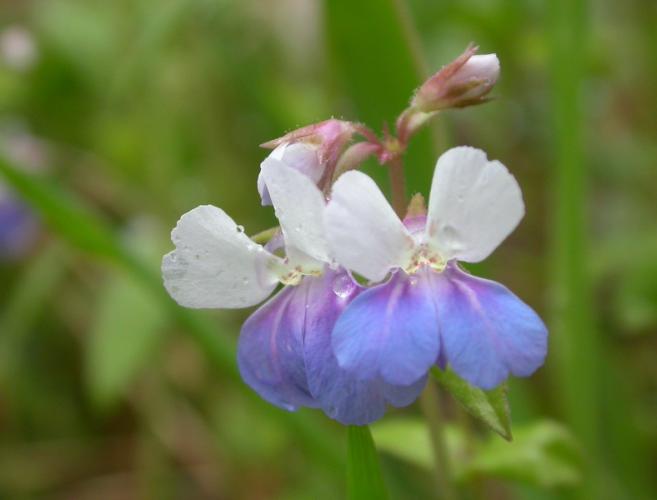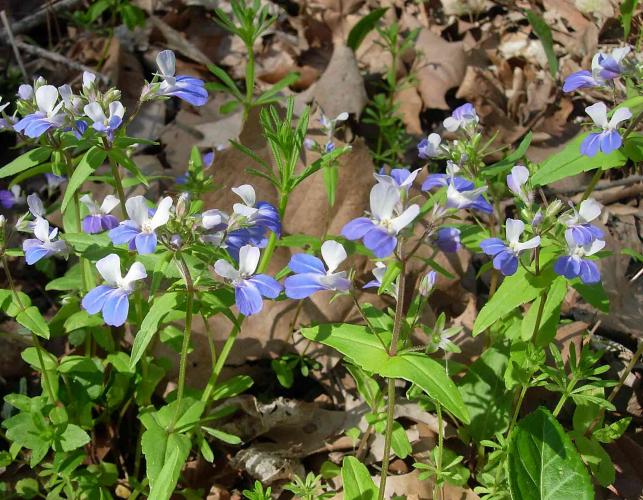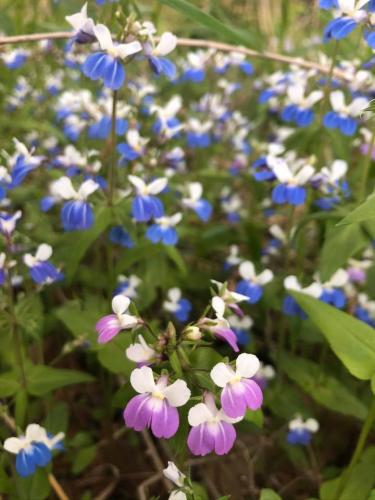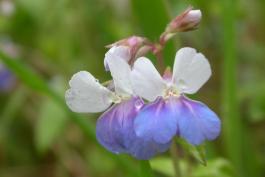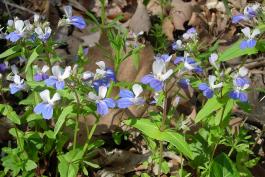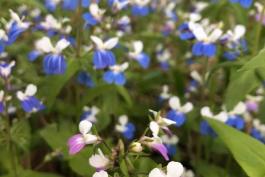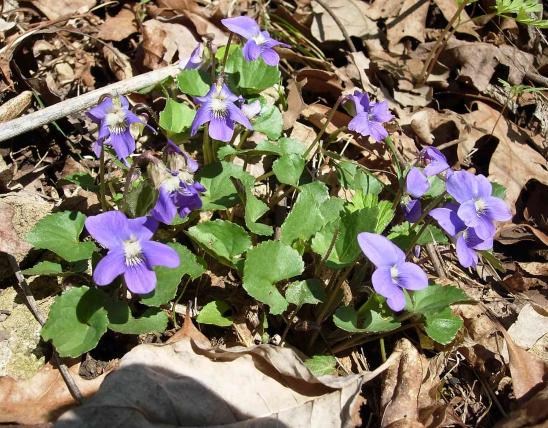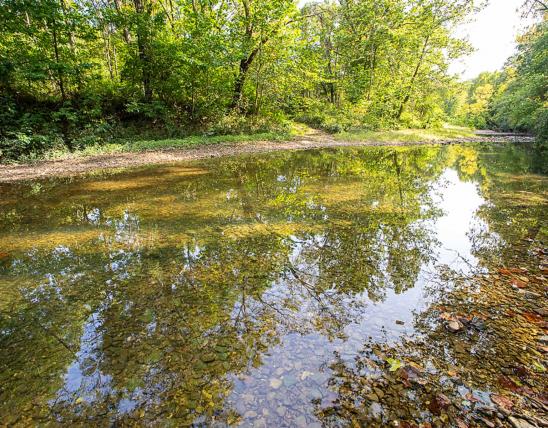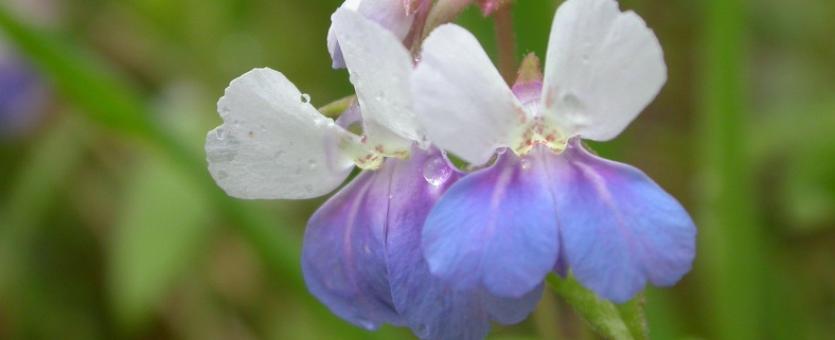
The flowers of blue-eyed Mary are only about a half inch wide, but this pretty wildflower makes up for it by usually appearing in abundance, covering a patch of forest floor with little sky-blue and white “faces.”
Flowers tubular on long stems arising from upper leaf axils; 2-lipped: the upper lip 2-lobed, white; the lower lip 3-lobed, sky blue, rarely purple or white. The center lower lobe forms a pouch in which the stamens and the pistil are hidden. This is one of the few Missouri wildflowers that is truly “blue.” Blooms April–June. Leaves opposite, the lower ones broadly egg-shaped, slightly scalloped or toothed, on long stems; upper leaves nearly stemless, lance-shaped, smooth along the edges.
Similar species: Violet collinsia, or Ozarkian blue-eyed Mary (C. violacea) is found in acid and sandy soils of glades, barrens, and outcrops, roadsides, open dry woods and ridges, and woodland openings, mainly in the prairie region of southwestern Missouri and in sandy areas of southeast Missouri. The flower's lower lip is violet, purple, or sometimes white; the lobes of the lips have notches to almost ¼ inch deep; the leaves are more uniformly narrow.
Height: to about 15 inches.
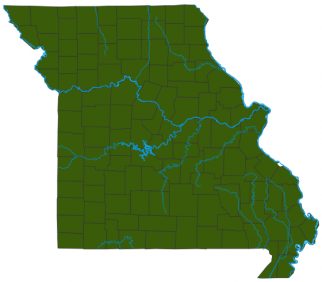
Scattered statewide, but its distribution is most concentrated in Central Missouri. Absent from most of the Ozarks and extreme northwestern and northeastern sections.
Habitat and Conservation
Occurs in moist, open wooded hills or valleys, streamsides; prefers dappled light. An excellent garden subject in humus-rich soil, where it will readily self-seed. A winter annual covering large areas, it develops seedlings in late fall that can survive the rigors of winter.
Status
Native Missouri wildflower.
Human Connections
This native wildflower does well in cultivation in moist, rich soils and can be grown easily from seed, but competing plants have to be kept away so they don't crowd out the developing seedlings.
Ecosystem Connections
Bumblebees, other bees with long tongues, and some butterflies glean nectar from these flowers.
